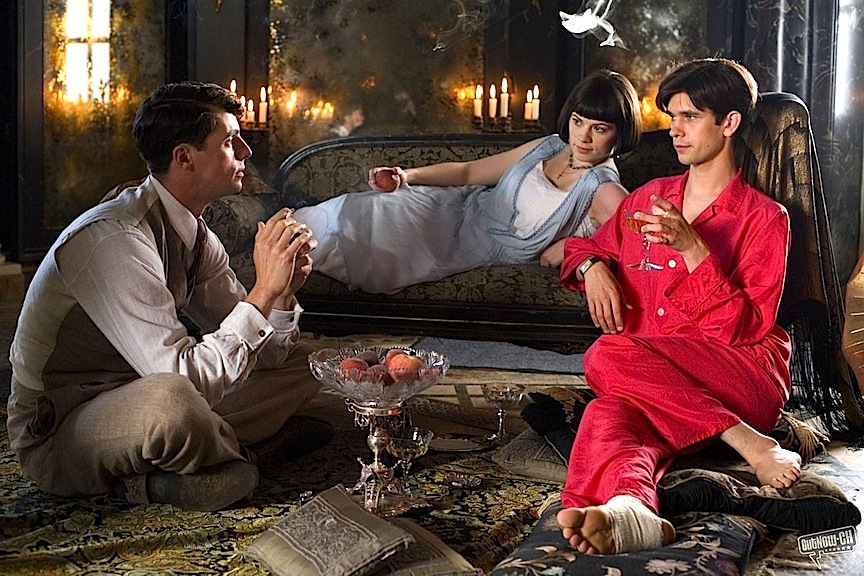MARIANI’S
Virtual
Gourmet
November
30, 2014
NEWSLETTER
IN THIS ISSUE
WHAT RECESSION?
THE GREEK RIVIERA'S NEW HOT SPOT
By Nick Danielides
GIFTS FOR THE HOLIDAYS
By John Mariani
NEW YORK CORNER
THE MILLING ROOM
By John Mariani
NOTES FROM THE WINE CELLAR
TRADITION THROUGH EVOLUTION:
CHÂTEAU PHÉLAN SÉGUR
By John Mariani
❖❖❖
WHAT RECESSION?
THE GREEK RIVIERA'S NEW HOT SPOT
By Nick Danielides
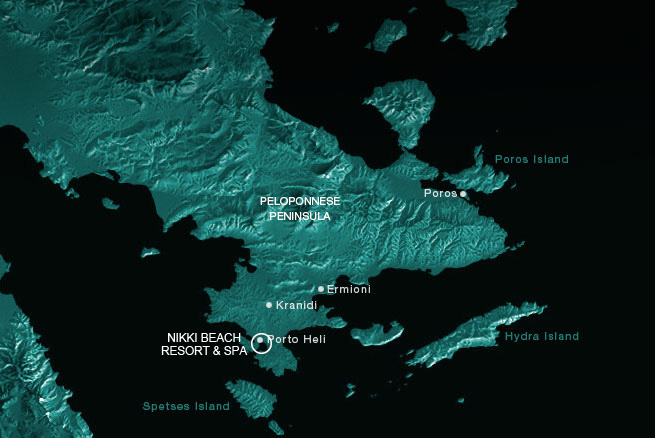
Despite Greece’s
enduring its worst financial crisis since World
War II, this year a record 19 million tourists
will visit the country. In fact, tourism is still
Greece’s main industry, drawing those who come to
visit the historic Hellenic sites and those who
come to bask in the scenic glory of the islands.
One region, which has the distinction of
being nicknamed the Greek Riviera, is Porto Heli in
the Argolic Gulf (right).
It has for a while been a favorite summer resort,
but it is also rich in archaeological sites that include
the Sanctuary of Asklepios at Epidaurus; the
legendary citadel of Mycenae and the Mycenaean
cemetery of Dendra;
and St. Dimitrios Monastery of Avgo.
As a result, cash-rich international
investors are taking a good look at the
possibilities for creating luxury hotels. But for
the moment, the well-heeled international crowd like
the Hilton sisters, Naomi Campbell, Kim Kardashian,
Beyoncé, Kanye West and other socialites need not
worry about finding luxury in Greece, and they won’t
have to leave the party and go home. They can just
book a room at the new Nikki
Beach
Resort and Spa (below) at Porto Heli, then move
the party to their suite.
The
new resort is a two-and-a-half-hour ride from Athens
by car and about the same by boat. The region
is already home to royalty, CEOs of multinational
corporations, celebrities and heads of state;
well-founded rumor has it that a Four Seasons Hotel
will be opening in the area. The
Nikki is the latest addition to a franchise based in
Miami founded in 1998 by Jack Penrod, with
properties in tony spots like St. Tropez, Cabo San
Lucas, 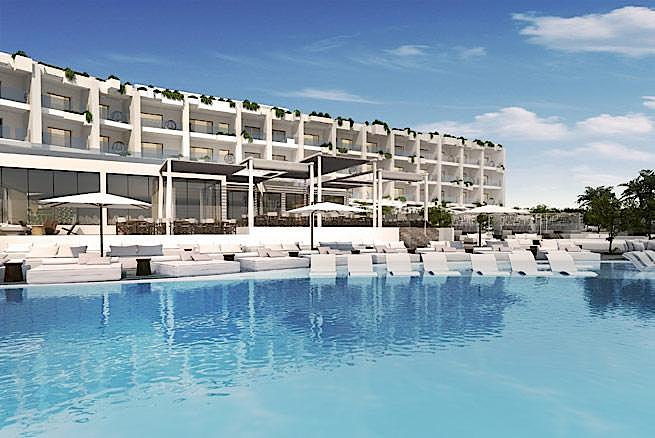 Marbella and Phuket. The
hotel, done by Gatserelia Design, which also did the
Don Carlos Hotel in Madrid and other Nikki
properties, boasts
66 beachfront suites, with prices ranging from 350
Euros to 850
euros per night;
this August and September, the place was
booked solid.
Soon the resort will have a nearby golf
course designed by Jack Nicklaus.
Marbella and Phuket. The
hotel, done by Gatserelia Design, which also did the
Don Carlos Hotel in Madrid and other Nikki
properties, boasts
66 beachfront suites, with prices ranging from 350
Euros to 850
euros per night;
this August and September, the place was
booked solid.
Soon the resort will have a nearby golf
course designed by Jack Nicklaus.
The resort has also put its reputation into
the dining areas, with food prepared here by Greek
chef Apostolos Demou, who worked under Alain
Ducasse, at the King George Hotel in Athens, and at
the Macedonia Palace Hotel in Thessaloniki. The
region teems with small producers making superb
extra virgin olive oil, organic greens, fresh fruit
and cheeses, so by partnering with local producers
and fisherman, Demou has created menus based on the
highest quality of ingredients. Finally, I can take
my friends from the States out to a restaurant where
service, presentation and selection is first rate! Those
tired of seeing another typical taverna, souvlaki
place, Greek salad, moussaka and fried calamari will
find their eureka moment at the Nikki restaurant (below). As a
result, I predict next season there will be a lot
more competition, spurred by the Nikki’s challenge.
On my recent visit, I spoke to a couple of Michelin
chefs in Athens--the city now has six star
restaurants--about the prospect of opening a
restaurant in Porto Heli. 
Dum spiro spero. I hope so.
While
the local wines are drinkable, none is among the
wine selection at the Nikki, and rightly so. The
fabulous wine selection lists only the best modern
Greek wines, along with a wide range of global
bottlings.
As a native Greek myself, and one
who more often entertains friends at home than at
restaurants, I found the food at the Nikki made a
great impression. Pressed pork belly (24 euros) was
cooked Sous-vide, prepared crispy and juicy, seated
on a pyramid of green pea puree laced with local
olive oil, green apple chips and ginger and pickles.
Other dishes on the menu include a seafood platter
for two (62 Euros), and I could readily smell and
taste that the sea clams and local shrimps were from
the bay of Kilada.
The lamb chops from local producers needed no
seasoning because the animal eats oregano and thyme
as a main food and it suffuses the meat. The chops
are accompanied by grilled veggies picked daily, and
fried potatoes (38 Euros).
On the roof top of the Nikki is a sushi bar
and restaurant with an excellent menu that includes
dim sum baskets holding a smoky, marinated satay
chicken with coconut milk, vegetables and sticky
rice on banana  leaves ($26
Euros). The
sashimi selection offers a choice of maguro and unagi,
with accompanying sake (16 Euros); yellow fin tuna
freshly caught in the Aegean is considered some of
the best in the world, and it’s on the menu here (18
Euros). There’s
even alligator sushi (for two persons 50 Euros).
leaves ($26
Euros). The
sashimi selection offers a choice of maguro and unagi,
with accompanying sake (16 Euros); yellow fin tuna
freshly caught in the Aegean is considered some of
the best in the world, and it’s on the menu here (18
Euros). There’s
even alligator sushi (for two persons 50 Euros).
Porto
Heli has a good number of hotels, including the
four-star AKS Hinitsa Bay and Porto Heli Hotel, the
deluxe Amanzo’e, as well as a number of posh villas,
but the Nikki has clearly set the template for what
I’m sure will make the region prime tourist
territory in the near future.
Nikki Beach Resort and Spa is at Eparchiaki
Odos Porto Cheli - Kosta, Greece :
(30) 275-409-8500.
❖❖❖
By John Mariani

446 Columbus Avenue (near 81st Street)
212-595-0380
themillingroom.com
Scott Bryan is among that small cadre
whom serious young chefs regard as an
inspiration, someone who came up at a time when
you earned your scars and scorchings in tough,
unsparing kitchens where the pecking order
was based on showing what you knew, not on
showing off.
Bryan, a graduate of demanding
restaurants like Bouley, Le Bernardin, Lespinasse
and Gotham Bar and Grill, worked 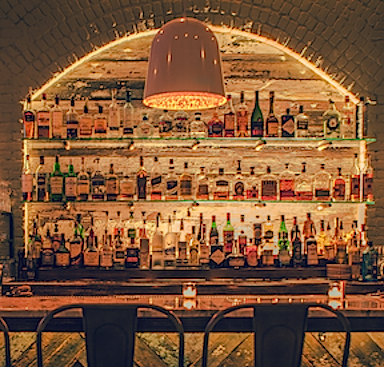 his way up doing Asian
fusion cuisine before becoming chef of the
wine-centric restaurant Veritas, then at
Mediterranean-inflected Apiary. Early
this year he manned the stoves in a tiny kitchen
at Bacchanal on the Bowery, but left after four
months. Now,
along with Luis and Victor Gonzalez, Bryan co-owns
The Milling Room, near the Museum of Natural
History, and he’s cooking at the top of his form,
using everything he knows to produce intensely
savory food that tastes very American while
incorporating global influences.
his way up doing Asian
fusion cuisine before becoming chef of the
wine-centric restaurant Veritas, then at
Mediterranean-inflected Apiary. Early
this year he manned the stoves in a tiny kitchen
at Bacchanal on the Bowery, but left after four
months. Now,
along with Luis and Victor Gonzalez, Bryan co-owns
The Milling Room, near the Museum of Natural
History, and he’s cooking at the top of his form,
using everything he knows to produce intensely
savory food that tastes very American while
incorporating global influences.
The restaurant is a huge space
(formerly the short-lived Corvo Bianco), with a
chalkboard mural and a marvelous tavern area
carved out of brick and beams, overseen by
creative bartender Jess Kanter-Kowal. Beyond
is the vast, domed dining room, whose skylight
during the day offers a true look at the homey
rustic use of wood, wrought iron, and red brick,
old wagon wheels, and overhead lighting
throughout.
I’m told they are working on brightening
the place at night—black is not a great choice for
a ceiling and ductwork—but it’s got great bones,
and the votive candles are a nice touch.
The menu is just the right size
for a place of this size-- although the wine list
could use expansion—with eight starters, three or
four pastas, and six entrees (none over $30), with
specials each night. Subtly, but critical to
Bryan’s cooking, is the acidic undertone in every
dish, so that everything has a brightness, a tang,
an edge some might call umami; I call it canny
cooking.
 Our
party
of four began with a terrific Tuscan white bean
soup ($10)—too often bland, here with cabbage,
tomato and Parmigiano, a rich, satisfying autumn
starter. Hamachi
tartare ($16) with avocado, cucumber, chives and yuzu shows
Bryan hasn’t lost his Asian touch, and grilled
octopus ($16) had a good sear on it, accompanied
by charred eggplant, arugula, and delectable
paprika oil, echoing his Mediterranean bias.
Our
party
of four began with a terrific Tuscan white bean
soup ($10)—too often bland, here with cabbage,
tomato and Parmigiano, a rich, satisfying autumn
starter. Hamachi
tartare ($16) with avocado, cucumber, chives and yuzu shows
Bryan hasn’t lost his Asian touch, and grilled
octopus ($16) had a good sear on it, accompanied
by charred eggplant, arugula, and delectable
paprika oil, echoing his Mediterranean bias.
His pastas just skirt being too
much of a good thing: generous in portion (as a
main dish), they exhibit the difficult-to-achieve
textures you find so effortlessly done in Italy. Pappardelle
pasta ribbons with rabbit meat, porcini
mushrooms, aromatic vegetables and the delightful
addition of orange ($23) should be a signature
dish, but there was everything to like about the
perfectly cooked wild mushroom risotto with peas,
reggiano cheese and black truffle ($20).
Atlantic cod, not always the
most flavorful fish, took on the rich, aromatic
flavors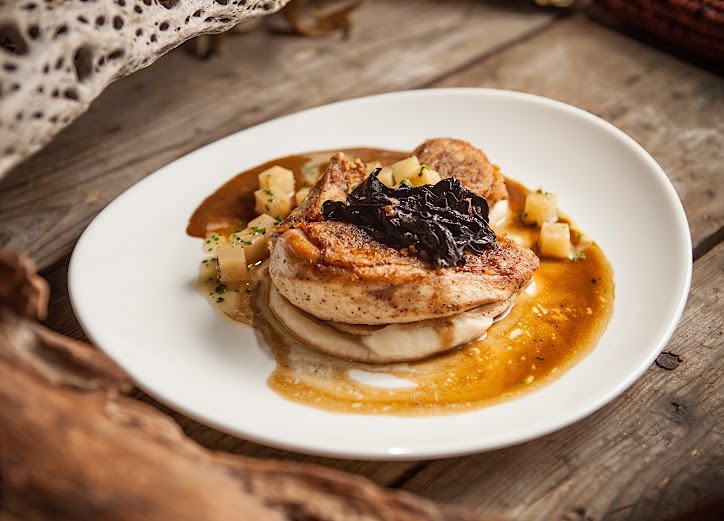 of a
bouillabaisse broth with white bean puree and
assertive aïoli ($26), while very good skate came
with couscous, capers, tomato and verjus
($23)—an ideal example of what I meant by adding
acids to a dish.
of a
bouillabaisse broth with white bean puree and
assertive aïoli ($26), while very good skate came
with couscous, capers, tomato and verjus
($23)—an ideal example of what I meant by adding
acids to a dish.
In my line of work, I try not
to use many superlatives, but for the moment at
least I can say that Bryan’s roast chicken (right) was
the best I’ve had in a long time—and I count many
very good ones along the way. I don’t
know how he gets the skin so crisp, but it almost
shattered to the bite. Adding celery root, black
trumpet mushrooms, tarragon and splash of Madeira
made it all the more wonderful ($23).
I liked two of the desserts
tried very much—a flourless chocolate cake and a
terrific blackberry financier. Vanilla panna cotta
seemed like a throwaway decision, and there are
better tarte Tatins in New York.
The
Milling Room, with a little tweaking, should be a
very popular draw in its Upper West Side
neighborhood, and with Bryan in as a partner, it
should soon be a destination for those who know he
is one of the city’s chefs who will always deliver
big flavors at reasonable prices. I'd go
back just for that roast chicken.
The Milling Room is
open for dinner nightly.
❖❖❖
GIFTS for the HOLIDAYS
By John Mariani
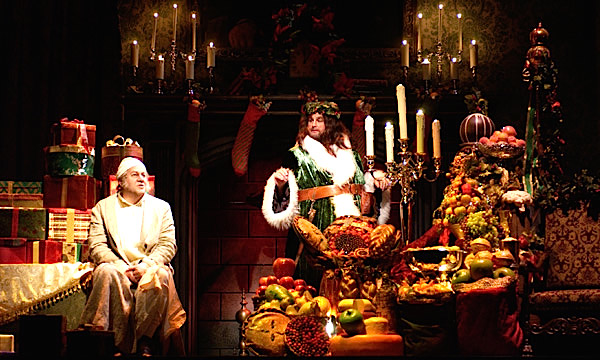
I love the sound of the word "hodge-podge," so here's mine for an array of possible holiday gifts.
BOOKS
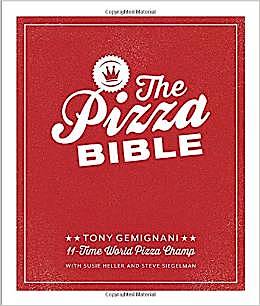
The Pizza Bible by
Tony Gemignani ($29.99)--Worn
out by pronouncements of know-it-all food
mavens who have turned pizza into an
overheated debate as to what is and what
is not pizza, which pizzeria is the best
and which is not, and on and on ad nauseam,
I was so happy to find that Tony
Gimignani, "11-Time World Pizza Champ,"
sets the record straight and shows how you
can make first-rate pizza without access
to a professional pizza oven. That's good
enough, but then he follows with examples
of pizzas that never stray from the
essential simplicity of a dish that has
been destroyed by novelty. O.K., I'm not
in love with his Chicago-style pizza or
with one named after an Italian gangster,
but he's doing things the right way, and
he appends plenty of other recipes for
global variations, all well illustrated
and well described. This is the only pizza
book any sane home cook will ever need.
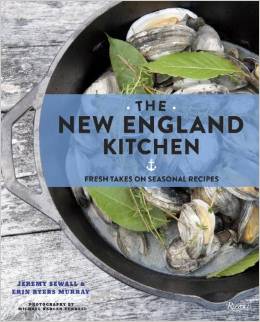
The New England Kitchen
by Jeremy Sewall and Erin Byers Murray
($29.95)--The regional focus of this
splendidly photographed, impeccably
written volume is the best of its kind in
years, and Sewall is one of New England's
finest advocates of his local bounty, from
cranberries to lobster. So, even if
so many of the recipes included haven't
much to do with New England culinary
tradition and are only to be found in
restaurants in Massachusetts, Rhode Island
and Maine, it's a moot point when Sewall
makes so many sound so good--the kind that
make you stick Post-Its on every page:
grilled razor clams with bacon and green
garlic; poached halibut with crisp
artichoke hearts; broccoli soup with
cheddar toast; lentil and lobster bisque;
salt cod beignets with black pepper aïoli,
and lemon tart with lavender cream.

New Orleans Classic Creole Recipes
by Kit Wohl ($13.85)--Every year or so Kit
Wohl returns to prove wrong everyone who
thinks Creole cookery is stuck in its
ways, too heavy, too spicy, and too much
of everything; the truth is, the cuisine
has evolved like all others in this
country over the last 30 years. Thus,
while you'll find no better examples--most
from New Orleans restaurants--of dishes
like shrimp and ham jambalaya, file gumbo,
crabmeat maison, pain perdu, and pralines,
you also find that things have lightened
up, become more complex in their use of
spices and based on far better ingredients
than Creole cooks had in the past.
Just page through this book and I
guarantee you'll stop and read the whole
recipe after looking at the photos of
contemporary renderings like beef daube
with fettuccine, jalapeño cheese grits,
crab cakes with ravigote sauce, and Creole
cream cheese Evangeline. No one in
the Crescent City knows the whole story of
New Orleans food better than Kit, and
she's determined to set it down with
respect and authority.
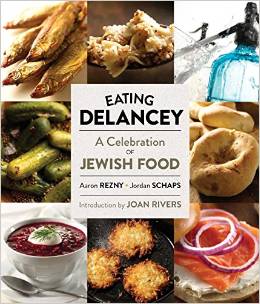 Eating
Delancey by Aaron
Rezny and Jordan Schaps
($23.62)--There are a lot of jokes about
bad Jewish food--many of them included in
this book--but Rezny and Schaps, two
photographers, show old-fashioned Jewish
cookery in such delectable context, that
anyone would be tempted to try kasha
varnishkes, stuffed cabbage, and matzo
brei. Just as important are the
contributions by noted Jewish
feinschmeckers like Joan Nathan, Arthur
Schwartz, even Franz Kafka, and
remembrances of great Jewish delis and
food emporiums. Perhaps the quintessential
Jewish pronouncement in the book is the
life-affirming "They tried to kills
us. We survived. Let's eat."
Eating
Delancey by Aaron
Rezny and Jordan Schaps
($23.62)--There are a lot of jokes about
bad Jewish food--many of them included in
this book--but Rezny and Schaps, two
photographers, show old-fashioned Jewish
cookery in such delectable context, that
anyone would be tempted to try kasha
varnishkes, stuffed cabbage, and matzo
brei. Just as important are the
contributions by noted Jewish
feinschmeckers like Joan Nathan, Arthur
Schwartz, even Franz Kafka, and
remembrances of great Jewish delis and
food emporiums. Perhaps the quintessential
Jewish pronouncement in the book is the
life-affirming "They tried to kills
us. We survived. Let's eat."
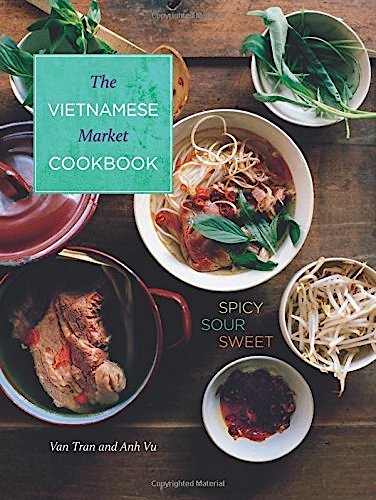
The Vietnamese Market Cookbook by
Van Tran and Anh Vu ($30)--There haven't
really been that many cookbooks about
Vietnamese cuisine, which, as this volume
indicates, can be as varied as papaya
salad with crispy anchovies and sea bass
carpaccio--though I suspect "carpaccio" is
not a word you'll hear much in Saigon
kitchens.
With its marvel of seasonings--but not as
much chile as Thai food--Vietnamese
cuisine is subtle, has a French influence
and is based on simplicity and family
meals, occasionally rising to the festive.
The authors show all of these ideas in
profusion along with delicate, engaging
text to explain the cultural underpinnings
of this beautiful country.
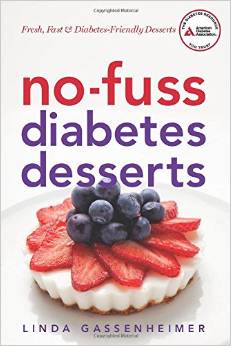
No-Fuss Diabetes Desserts by
Linda Gassenheimer ($9.95)--I am not one
to promote "health foods" but I am all in
favor of alerting people with specific
maladies to foods that will be tailored
for them and delicious. The recipes
in Linda Gassenheimer's new book, with the
American Diabetes Association seal of
approval, shows how delectably easy it is
to follow a diabetic diet and feast on
sweet dishes like fennel apple saute,
baked stuffed pears, floating island, even
chocolate walnut balls. No recipe is
more than a page long, and her culinary
hints are invaluable.
And since Linda Gasenheimer is one of
Amertica's finest cookbook authors, diabetics
should applaud her tackling this subject.
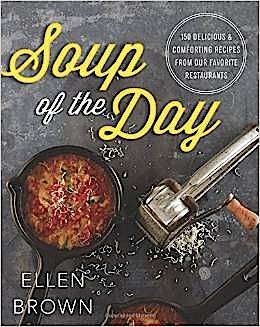 Two
friends turned out two different books
this year on a food course most people
don't undertake as often as
Two
friends turned out two different books
this year on a food course most people
don't undertake as often as they might because soup is considered a
time-consumer, especially when there's a
can of Campbell's Tomato Soup somewhere
back in the cupboard. But as Soup of the
Day by Ellen Brown ($20) and Soup for Two
by Joanna Pruess ($24.95) prove, soups are
a knack not a bother, and it just takes
the right seasonal ingredients to
add soup as a savory course to a
meal or, in many cases, be a meal in
themselves. For her compendium,
Brown, food editor of the Providence
Journal, has called on chefs all
over the country who best define their
region for recipes--Stephan Pyles's Texas
poblano asiago soup with golden tomato
foam and John Fraser's creamy clam chowder
with smoked potatoes and chorizo; Pruess
wants more people to savor more soups by
showing it's not that difficult to make
soup for just two people who will be
delighted with her curried pumpkin-coconut
soup and shrimp posole. And with
winter in the offing, soup and a glass of
wine may be all you need.
they might because soup is considered a
time-consumer, especially when there's a
can of Campbell's Tomato Soup somewhere
back in the cupboard. But as Soup of the
Day by Ellen Brown ($20) and Soup for Two
by Joanna Pruess ($24.95) prove, soups are
a knack not a bother, and it just takes
the right seasonal ingredients to
add soup as a savory course to a
meal or, in many cases, be a meal in
themselves. For her compendium,
Brown, food editor of the Providence
Journal, has called on chefs all
over the country who best define their
region for recipes--Stephan Pyles's Texas
poblano asiago soup with golden tomato
foam and John Fraser's creamy clam chowder
with smoked potatoes and chorizo; Pruess
wants more people to savor more soups by
showing it's not that difficult to make
soup for just two people who will be
delighted with her curried pumpkin-coconut
soup and shrimp posole. And with
winter in the offing, soup and a glass of
wine may be all you need.
CRAVINGS
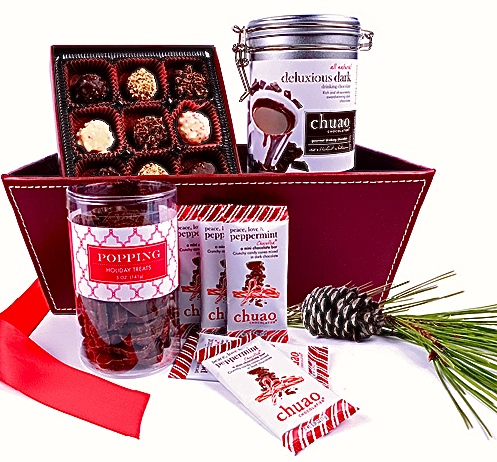
VENEZUELAN-STYLE
CHOCOLATES
As happy as I am to gorge on all my old favorite
chocolates—from Lindt to Toblerone, from See’s to
Hershey’s—it’s always good to see a newcomer to
the market that is doing something novel. Chuao
Chocolatier out of San Diego, begun by
brothers Michael and Richard Antonorsi, is named
after a famous cacao-producing region of Chuao
(pronounced chew-WOW) located in central
Venezuela. Their
signature flavor was Spicy Maya, made with pasilla
chile and cayenne pepper. Now there is a whole
array of unusual flavors, from delicious a salted
crunch bar and pretzel toffee twirl to oddities
like maple bacon bar and potato chip bar (not so
wonderful). There are gift boxes available with an
array of selections (left).
A MORE
AFFORDABLE WAGYU-STYLE STEAK
Called
by whichever misnomer you like—wagyu or kobe—you
know it went you see the real McCoy, meaning the
richly marbled Japanese beef from a small number
of Prefectures that sell 90 percent of their
product in Japan.
The rest that does go abroad is very
expensive for the top cuts like sirloin, ribeye
and filet mignon. American-raised
wagyu-style beef, produced from the same breed of
cattle, is a less pricey alternative. Manhattan butcher Lobel’s
is now selling American wagyu cuts, especially
a terrifically flavorful
flank steak at a price that makes it well
worthwhile cooking up for a special occasion,
which in my case was a party the day before my
older son got married. Since
it’s from a wagyu breed, Lobel’s is remarkably
fat-rich and exceptionally juicy, so that you can
serve it as you would any steak and tastes a whole
lot better than filet mignon. A two to
two-and-half pound flank steak is available on
line at $79.99. (Call 1-877-783-4512)
❖❖❖
CHÂTEAU PHÉLAN SÉGUR
By John
Mariani
The French expression “plus ça change plus
c’est la même chose”—the more things
change the more they remain the same—may be
readily applied to the way an esteemed Bordeaux
wine estate like Château Phélan Ségur has evolved
by using the most up-to-date technology and
viticultural science while rigorously maintaining
its essential character.
Indeed, the whole idea of terroir—meaning the
confluence of place, soil, climate and history in a
region—is manifest in a wine that always tastes the
same, only better.
Phélan Ségur, in the region of Saint Éstephe,
was founded in 1810 by an Irishman named Bernard
Phelan, whose family ran it until 1919. Two more
owners followed, then in 1985 Xavier Gardinier
purchased the estate, and worked hard to renovate the property
and vineyards and improve the wines by using the
most modern technology available. In fact, he did
not even release the ’83, ’84 and ’85 vintages
because they were not good enough.
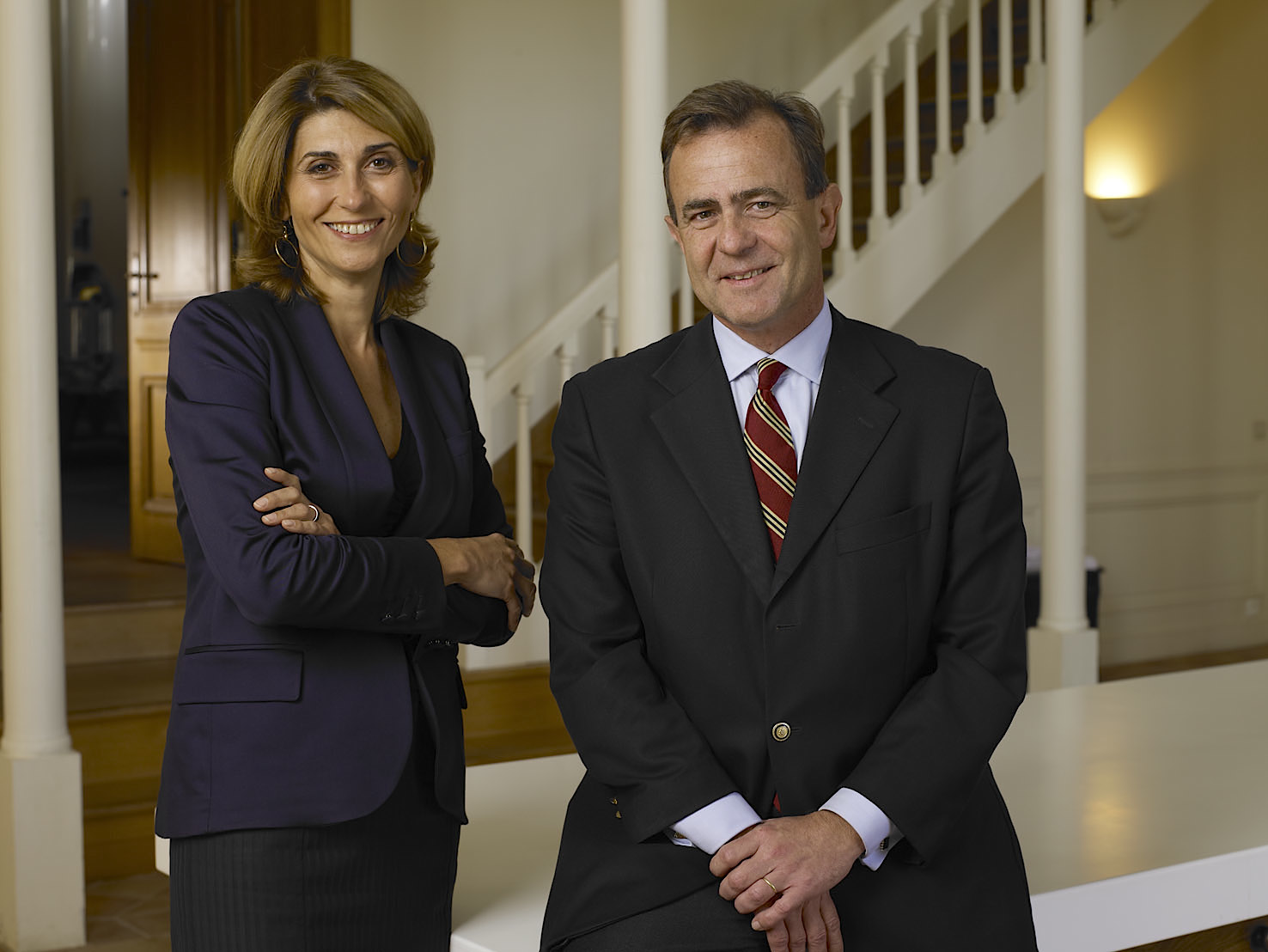 Today, the
château is run by Thierry Gardinier, Xaviar’s eldest
son, and Véronique Dausse, since 2010 Director of
Phélan Ségur (left),
with whom I had a dinner recently in New York. As we
sipped glasses of Phélan Ségur, Ms. Dausse said, “We
are drinking tradition, history, and culture. These
are things we can never betray. So, are we making
our wines better? I prefer to say the vines are more
healthy and the wines more consistent, precise. We are
not changing the basics of what makes Phélan Ségur
special.”
Today, the
château is run by Thierry Gardinier, Xaviar’s eldest
son, and Véronique Dausse, since 2010 Director of
Phélan Ségur (left),
with whom I had a dinner recently in New York. As we
sipped glasses of Phélan Ségur, Ms. Dausse said, “We
are drinking tradition, history, and culture. These
are things we can never betray. So, are we making
our wines better? I prefer to say the vines are more
healthy and the wines more consistent, precise. We are
not changing the basics of what makes Phélan Ségur
special.”
That
distinctiveness—a full-bodied, very luscious,
silky-soft wine—derives from cabernet sauvignon and
merlot grapes whose mineral edge comes from a soil
made of gravel and sandy clay over a bedrock of
chalk, a composition created in an age when the
region was covered by ocean. Luc Peyronnet, vineyard
manager since 1993, analyzed all the hectares of
soil and introduced the GreenSeeker
system, which measures and interprets precisely the
vigor of the vine throughout the year, helping
Peyronnet to control the nutritional requirements of
the plants.
The harvested grapes are brought to the
winery, where a new,
gentle de-stemmer and an optical sorter are used
to assure quality and freshness. The juice
is transferred to new,
smaller tanks that distinguish the micro-parcels
identified by the Greenseeker
analysis. The wine then spends 18 months in 50
percent new French oak barrels, then goes through
the age-old process of racking, by which the wine
is manually separated from its lees, rather than
go through harsh pumping. 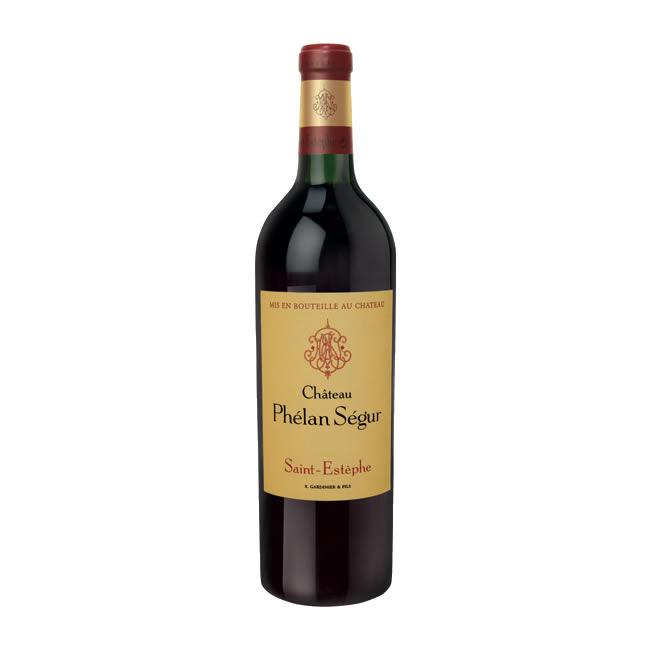
The château has also
made, since 1986, a lighter version of red wine
called Frank Phélan (the founder’s son), using a
component of grapes from vines that are still too
young to be included in Phélan Ségur.
Ms. Dausse also spoke of the
effects of global warming, which can be a
double-edged sword in Bordeaux, where vintners crave
more sun and heat in order to produce healthy, ripe
fruit. “We know global warming is happening,” she
said, “and we are all for using ripe fruit, but we
have to be careful that the alcohol level in the
wine does not rise to the point where the fruit,
acids and other components are unbalanced.”
The guiding principle then—and
one that New World wineries have not the history
for—is to keep Phélan Ségur what it has always been,
so that its characteristics do not just express a
larger Bordeaux flavor profile and a more focused
St. Éstephe character, but also that of the
individual terroir that the estate encompasses.
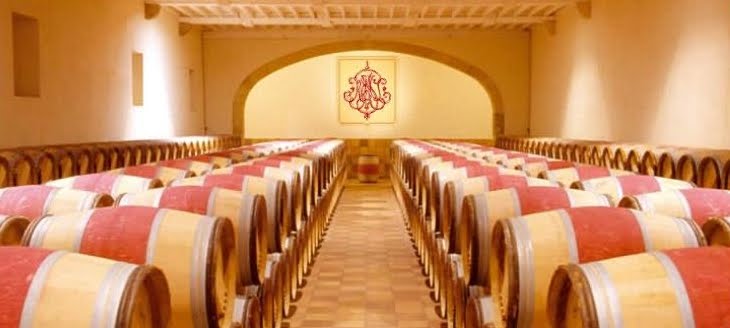 It is a
style and flavor that Ms. Dausse insists must always
be the same, despite differences in vintages, and
that the global market recognizes its quality as a
Grand Vin du Bordeaux. Protecting those traditions
and legacy has become tasking in the global market,
especially in China, where forgery of French wines
is rampant. “We have spent thousands of euros
fighting these forgeries,” says Dausse. “We’ve found
they’ve even copied the printing on our corks!”
It is a
style and flavor that Ms. Dausse insists must always
be the same, despite differences in vintages, and
that the global market recognizes its quality as a
Grand Vin du Bordeaux. Protecting those traditions
and legacy has become tasking in the global market,
especially in China, where forgery of French wines
is rampant. “We have spent thousands of euros
fighting these forgeries,” says Dausse. “We’ve found
they’ve even copied the printing on our corks!”
(For consumers outside of China,
Phélan Ségur is still quite a bargain for a
well-regarded Bordeaux, usually priced from $35 to
$65, depending on the vintage and store.)
To keep its story told, the estate welcomes
professional and private visitors to the château for a
personalized tour of the vineyard, which includes a
technical visit with the vineyard manager, a cooking
lesson from the château’s
chef and tastings.
❖❖❖
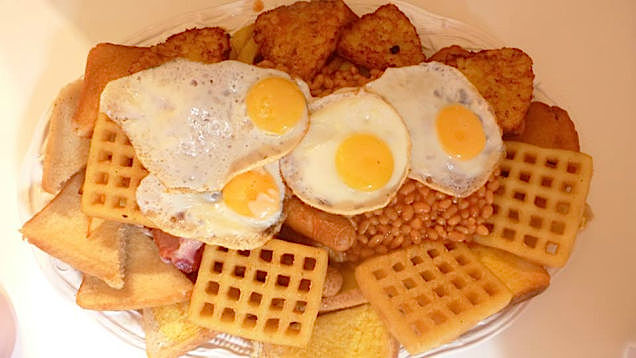
WRETCHED EXCESS, PART 23,445
HIPSTER
FOODIE IMAGERY, PART 335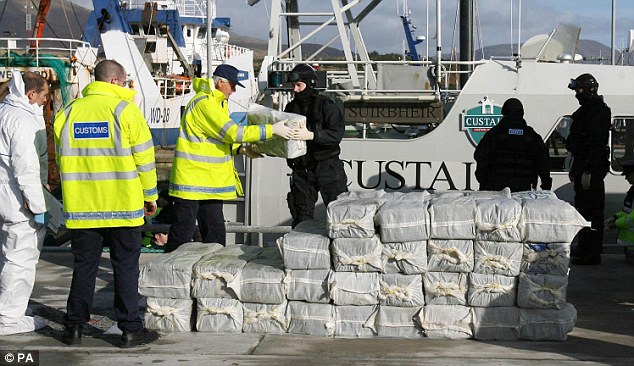
“Stars was
the bump of white-sand coke snorted off a lacquered
table on some department store heiress's yacht in
Tiburon, with lobsters on the grill, Montrachet
chilling in a platinum bucket.”—John Birdsall,
"Jeremiah Tower’s Invincible Armor of Pleasure,” Eater.com
(Nov. 10, 2014)
JUST IN TIME FOR CHRISTMAS!
 I'm proud
and happy to announce that my new book, The Hound in Heaven
(21st Century Lion Books), has just been published
through Amazon and Kindle. It is a Christmas
novella, and for anyone who loves dogs, Christmas,
romance, inspiration, even the supernatural, I
hope you'll find this to be a treasured
favorite. The story concerns how, after a New
England teacher, his wife and their two daughters
adopt a stray puppy found in their barn in
northern Maine, their lives seem full of promise.
But when tragedy strikes, their wonderful dog
Lazarus and the spirit of Christmas are the only
things that may bring back his master back from
the edge of despair. WATCH
THE VIDEO
I'm proud
and happy to announce that my new book, The Hound in Heaven
(21st Century Lion Books), has just been published
through Amazon and Kindle. It is a Christmas
novella, and for anyone who loves dogs, Christmas,
romance, inspiration, even the supernatural, I
hope you'll find this to be a treasured
favorite. The story concerns how, after a New
England teacher, his wife and their two daughters
adopt a stray puppy found in their barn in
northern Maine, their lives seem full of promise.
But when tragedy strikes, their wonderful dog
Lazarus and the spirit of Christmas are the only
things that may bring back his master back from
the edge of despair. WATCH
THE VIDEO “What a huge surprise turn this story took! I was completely stunned! I truly enjoyed this book and its message.” – Actress Ali MacGraw
“He had me at Page One. The amount of heart, human insight, soul searching, and deft literary strength that John Mariani pours into this airtight novella is vertigo-inducing. Perhaps ‘wow’ would be the best comment.” – James Dalessandro, author of Bohemian Heart and 1906.
“John Mariani’s Hound in Heaven starts with a well-painted portrayal of an American family, along with the requisite dog. A surprise event flips the action of the novel and captures us for a voyage leading to a hopeful and heart-warming message. A page turning, one sitting read, it’s the perfect antidote for the winter and promotion of holiday celebration.” – Ann Pearlman, author of The Christmas Cookie Club and A Gift for my Sister.
“John Mariani’s concise, achingly beautiful novella pulls a literary rabbit out of a hat – a mash-up of the cosmic and the intimate, the tragic and the heart-warming – a Christmas tale for all ages, and all faiths. Read it to your children, read it to yourself… but read it. Early and often. Highly recommended.” – Jay Bonansinga, New York Times bestselling author of Pinkerton’s War, The Sinking of The Eastland, and The Walking Dead: The Road To Woodbury.
“Amazing things happen when you open your heart to an animal. The Hound in Heaven delivers a powerful story of healing that is forged in the spiritual relationship between a man and his best friend. The book brings a message of hope that can enrich our images of family, love, and loss.” – Dr. Barbara Royal, author of The Royal Treatment.
Any of John Mariani's
books below may be ordered from amazon.com.
 |
The Encyclopedia of American Food and Drink by John F. Mariani (Bloomsbury USA, $35) Modesty forbids me to praise my own new book, but let me proudly say that it is an extensive revision of the 4th edition that appeared more than a decade ago, before locavores, molecular cuisine, modernist cuisine, the Food Network and so much more, now included. Word origins have been completely updated, as have per capita consumption and production stats. Most important, for the first time since publication in the 1980s, the book includes more than 100 biographies of Americans who have changed the way we cook, eat and drink -- from Fannie Farmer and Julia Child to Robert Mondavi and Thomas Keller. "This book is amazing! It has entries for everything from `abalone' to `zwieback,' plus more than 500 recipes for classic American dishes and drinks."--Devra First, The Boston Globe. "Much needed in any kitchen library."--Bon Appetit. |
"Eating Italian will never be the same after reading John Mariani's entertaining and savory gastronomical history of the cuisine of Italy and how it won over appetites worldwide. . . . This book is such a tasteful narrative that it will literally make you hungry for Italian food and arouse your appetite for gastronomical history."--Don Oldenburg, USA Today. "Italian
restaurants--some good, some glitzy--far
outnumber their French rivals. Many of
these establishments are zestfully described
in How Italian Food Conquered the World, an
entertaining and fact-filled chronicle by
food-and-wine correspondent John F.
Mariani."--Aram Bakshian Jr., Wall Street
Journal.
"Equal parts
history, sociology, gastronomy, and just
plain fun, How Italian Food Conquered the
World tells the captivating and delicious
story of the (let's face it) everybody's
favorite cuisine with clarity, verve and
more than one surprise."--Colman Andrews,
editorial director of The Daily
Meal.com. "A fantastic and fascinating
read, covering everything from the influence
of Venice's spice trade to the impact of
Italian immigrants in America and the
evolution of alta cucina. This book will
serve as a terrific resource to anyone
interested in the real story of Italian
food."--Mary Ann Esposito, host of PBS-TV's
Ciao
Italia. "John Mariani has written the
definitive history of how Italians won their
way into our hearts, minds, and
stomachs. It's a story of pleasure over
pomp and taste over technique."--Danny Meyer,
owner of NYC restaurants Union Square
Cafe, The Modern, and Maialino.
|
 |
 |
 |
 |
 |
 |
 |
 |
 Everett Potter's Travel Report:
Everett Potter's Travel Report: 
 Eating Las
Vegas is the new on-line site for
Virtual Gourmet contributor John A. Curtas.,
who since 1995 has been commenting on the
Las Vegas food scene and reviewing
restaurants for Nevada Public Radio.
He is also the restaurant critic for KLAS
TV, Channel 8 in Las Vegas, and his past
reviews can be accessed at KNPR.org.
Click on the logo below to go directly to
his site.
Eating Las
Vegas is the new on-line site for
Virtual Gourmet contributor John A. Curtas.,
who since 1995 has been commenting on the
Las Vegas food scene and reviewing
restaurants for Nevada Public Radio.
He is also the restaurant critic for KLAS
TV, Channel 8 in Las Vegas, and his past
reviews can be accessed at KNPR.org.
Click on the logo below to go directly to
his site.

Tennis Resorts Online: A Critical Guide to the World's Best Tennis Resorts and Tennis Camps, published by ROGER COX, who has spent more than two decades writing about tennis travel, including a 17-year stretch for Tennis magazine. He has also written for Arthur Frommer's Budget Travel, New York Magazine, Travel & Leisure, Esquire, Money, USTA Magazine, Men's Journal, and The Robb Report. He has authored two books-The World's Best Tennis Vacations (Stephen Greene Press/Viking Penguin, 1990) and The Best Places to Stay in the Rockies (Houghton Mifflin, 1992 & 1994), and the Melbourne (Australia) chapter to the Wall Street Journal Business Guide to Cities of the Pacific Rim (Fodor's Travel Guides, 1991).


MARIANI'S VIRTUAL GOURMET
NEWSLETTER is published weekly. Editor/Publisher: John
Mariani.
Editor: Walter Bagley. Contributing Writers: Christopher Mariani,
Robert Mariani, Misha
Mariani,
John A. Curtas, Edward Brivio, Mort Hochstein,
Andrew Chalk, Dotty Griffith and Brian Freedman. Contributing
Photographers: Galina Dargery, Bobby
Pirillo. Technical Advisor: Gerry McLoughlin.
To un-subscribe from this newsletter,click here.
© copyright John Mariani 2014
